The coat of arms, the flag and the anthem are the official symbols of each country. At the same time, the number of different informal attributes of a country is unlimited. Airplanes and cars, drinks and flowers, songs and traditions are what most people associate with this or that state or nation. There are also buildings and architectural monuments that have deep historical significance, were ahead of their time and are unique in their own way. This blog provides an overview of some of these iconic sites from around the world.
Burj Khalifa (Dubai, UAE)
Another of Dubai's wonders, the Burj Khalifa is not only a super-tall skyscraper, but also a masterpiece of engineering and modern architecture. It is the tallest (including freestanding) and most multi-storey building in the world today. The talented Chicago architect Adrian Smith - one of the world's greatest specialists in the construction of super-tall buildings - was at the forefront of the development of this grandiose project. Work began in the winter of 2004 and took 6 years to complete, during which time a number of key issues had to be resolved:
- Building a solid foundation on sand. This involved anchoring 192 piles, each 43 metres long and 1.5 metres in diameter.
- The wind resistance of the building, for which the model was tested more than 40 times in a wind tunnel. The solution was found in nature: Inspired by the local desert flower, the spider lily, Adrian Smith designed the base of the future building using the proportions of the flower. The result is an extremely rigid structure.
- More than 12,000 workers were needed to construct the building at such an extreme height, and a special type of concrete was invented to withstand temperatures of more than 50 degrees Celsius.
The skyscraper has special safety measures and special solutions for evacuating people. In addition to glass and stainless steel, the interiors use travertine floors, Venetian plaster and Brazilian rosewood. The rooms are decorated with paintings by local and international artists, as well as handmade carpets and plates. Burj Khalifa includes luxury residences, the world's first Armani hotel with a ballroom, conference halls and 50,000m2 of office space, restaurants and sports clubs, shopping and entertainment centres, swimming pools and tennis courts, the world's highest public observatory and a multi-storey car park.
To understand the scale of the building, some figures are given: height - 828 m, number of floors - 163, total internal area - 344 thousand m2, number of lifts - 57. The graceful and perfect building blends seamlessly into the landscape of the region. It offers breathtaking views, not even of the city, but of the country and the Persian Gulf. Skydiver and stuntwoman Nicole Smith-Ludwick, who filmed a commercial for Emirates Airlines at the top of the skyscraper, said it was the most awe-inspiring and exciting experience of her life. Famous films such as 'Fast and Furious 7' and 'Mission Impossible' starring Tom Cruise have been filmed here. Burj Khalifa has become a symbol not only of the Emirates' innovative development, but also of a luxurious lifestyle.
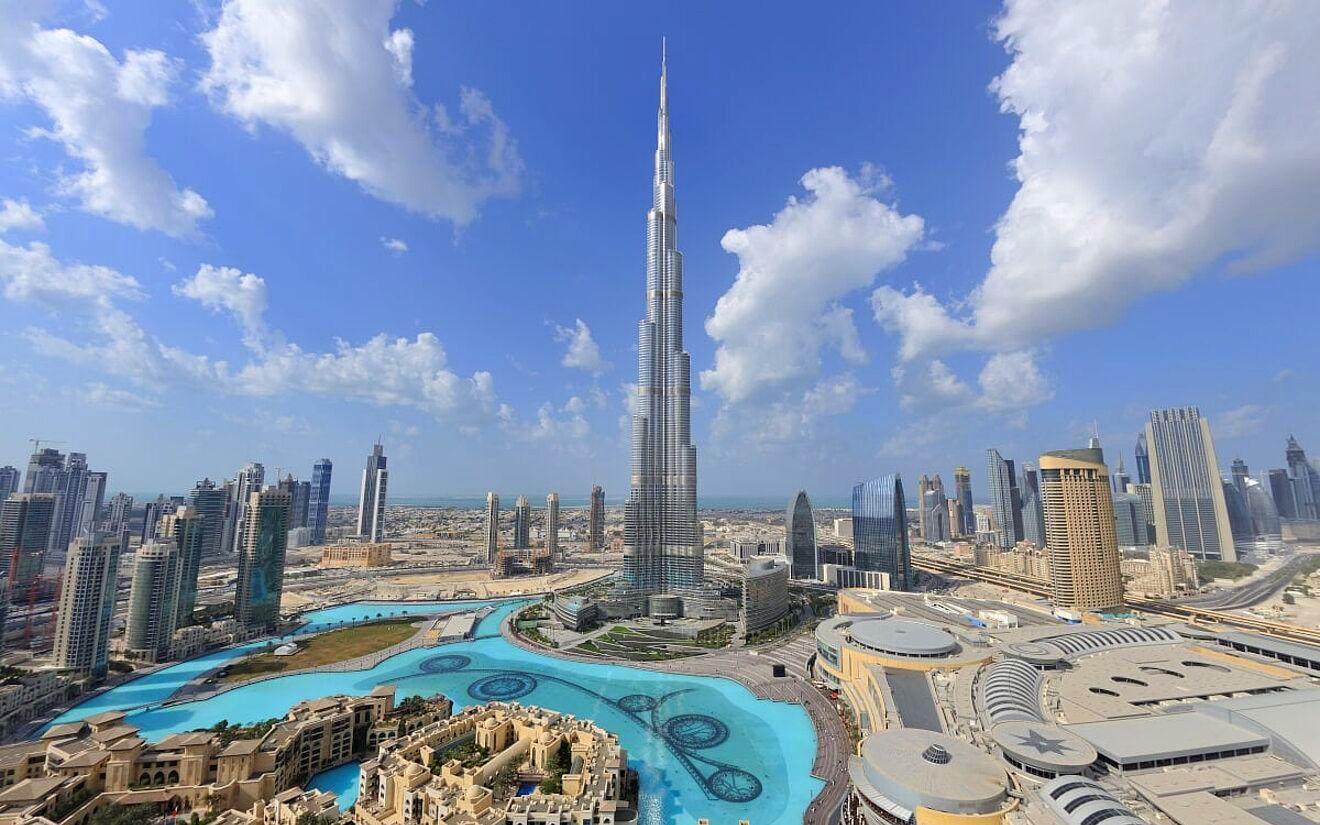
Sydney Opera House (Sydney, Australia)
The Sydney Opera House is a world-famous landmark in Sydney, Australia's largest city and business centre. The futuristic building, designed by Danish architect Jorn Watson, was built on the south side of Sydney Bay in 1973 and opened by Queen Elizabeth II. The architecture, design and construction techniques were far ahead of their time. The architect himself described his creation as 'a combination of orange slices' and the design was heavily influenced by shipbuilding.
The building is designed as a series of 'shells' that unite several theatre complexes oriented along two main axes. Structurally, it consists of two key elements: a solid base and a series of relatively light roofs, with a length of 183 metres and a width of 120 metres. The structure is made of reinforced concrete and the facades are made of bronze-coloured polarised glass with steel frames. The shells are clad in matte white and cream tiles, although from a distance they all appear white. The interior is dominated by pink granite and natural wood. The interior and underground parts of the building include concert and rehearsal halls, opera and drama theatres, dressing rooms, a library, restaurants and bars, offices and souvenir shops. Every element of the design is designed to make visitors feel comfortable and at ease.
In total, the halls and theatres can seat more than 4.5 thousand spectators, and the mechanical organ, with 10,000 pipes, is considered to be the largest in the world. In 1947, the renowned British conductor Eugene Goossens, appointed to lead the Sydney Symphony Orchestra, publicly called for a world-class concert hall. The Sydney Opera House soon became Australia's premier tourist destination and one of the world's busiest arts centres. Over the years, the theatre has hosted the likes of Ella Fitzgerald, Joan Sutherland, Bob Dylan, Kylie Minogue and Sting. Famous operas performed here include The Merry Widow, Othello, La Traviata, Die Fledermaus and Tales of Hoffmann. The music of Prokofiev and Tchaikovsky has been performed in the halls of the Sydney Opera House. Many festivals, competitions, film and music awards have been held here. Today the Opera provides training in many disciplines including drawing, ballet, architecture and animation. The Sydney Opera House was inscribed on the UNESCO World Heritage List in 2007.
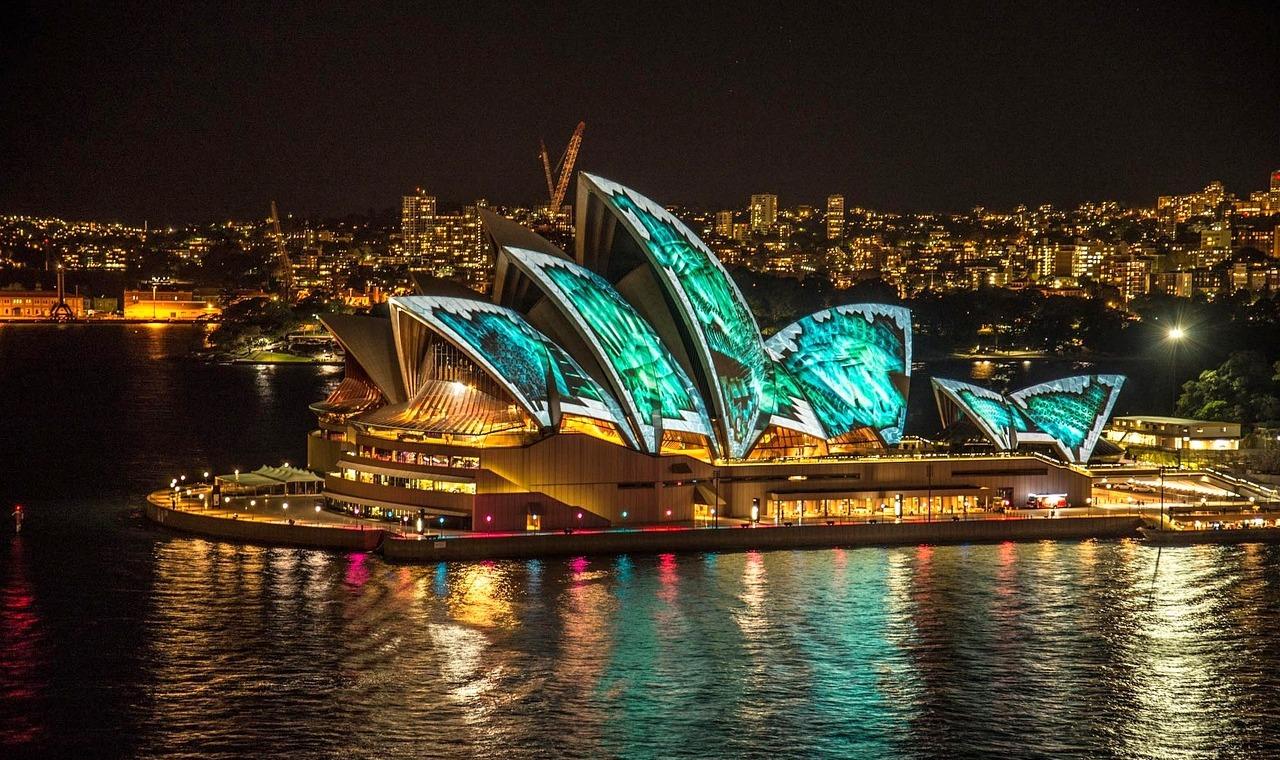
Moscow State University Main Building (Moscow, Russia)
This majestic building is well known not only to the people of Moscow and Russia, but also far beyond its borders. Located on Vorobyovy Gory, the MSU is one of the so-called 'Moscow skyscrapers' that epitomised the architectural image of the capital in the middle of the last century, and is the most monumental of them all. It is also one of the symbols and benchmarks of education in the country. The MSU building, like 7 other high-rise examples of Stalinist architecture, was built in 1947 as a new hotel. A year later, however, it was decided to build a university on the (then) Lenin Hills. The first students filled the auditorium in September 1953. The scale of the construction, led by chief architect Lev Rudnev, was astonishing at the time. So much earth had to be excavated that, if it had been loaded onto railway wagons, the train would have been 300 km long. The height of the 36-storey main building is 240 metres, and for a long time it was the tallest in Europe. At first it was planned to crown the spire with a statue of the leader of the world proletariat, then with a statue of the founder of the university - Mikhail Vasilievich Lomonosov. The latter was finally installed near the main entrance, where students now celebrate the end of the regular session.
More than 500 companies took part in the construction of the building, 150 thousand pieces of furniture and about 75 thousand chandeliers and lamps were made. Materials and equipment were brought from all over the USSR. The largest clock in Moscow (the dial was 9 metres in diameter) was installed in the university, and the walls of the corridors and classrooms were decorated with paintings by great Russian and Soviet artists. From the windows of MSU and from the observation deck on the 32nd floor you can enjoy a magnificent panorama of the city and especially of the Luzhniki sports complex. Moscow State University has 1150 classrooms and more than 1,000 laboratories for undergraduate and postgraduate students. 11 Nobel Prize winners have graduated from the university, which is consistently ranked in the top 100 of the world's leading educational institutions. The building is surrounded by its own botanical garden and park ensemble, with a total area of around 170 hectares. The most popular cultural event at the university was the performance of the famous French musician Jean Michel Jarre on the square in 1997, which was attended by more than 5 million people! In addition, the building of the Moscow State University has been used as an object of attraction in feature films and car races through the night streets of Moscow.
Moscow State University on the map
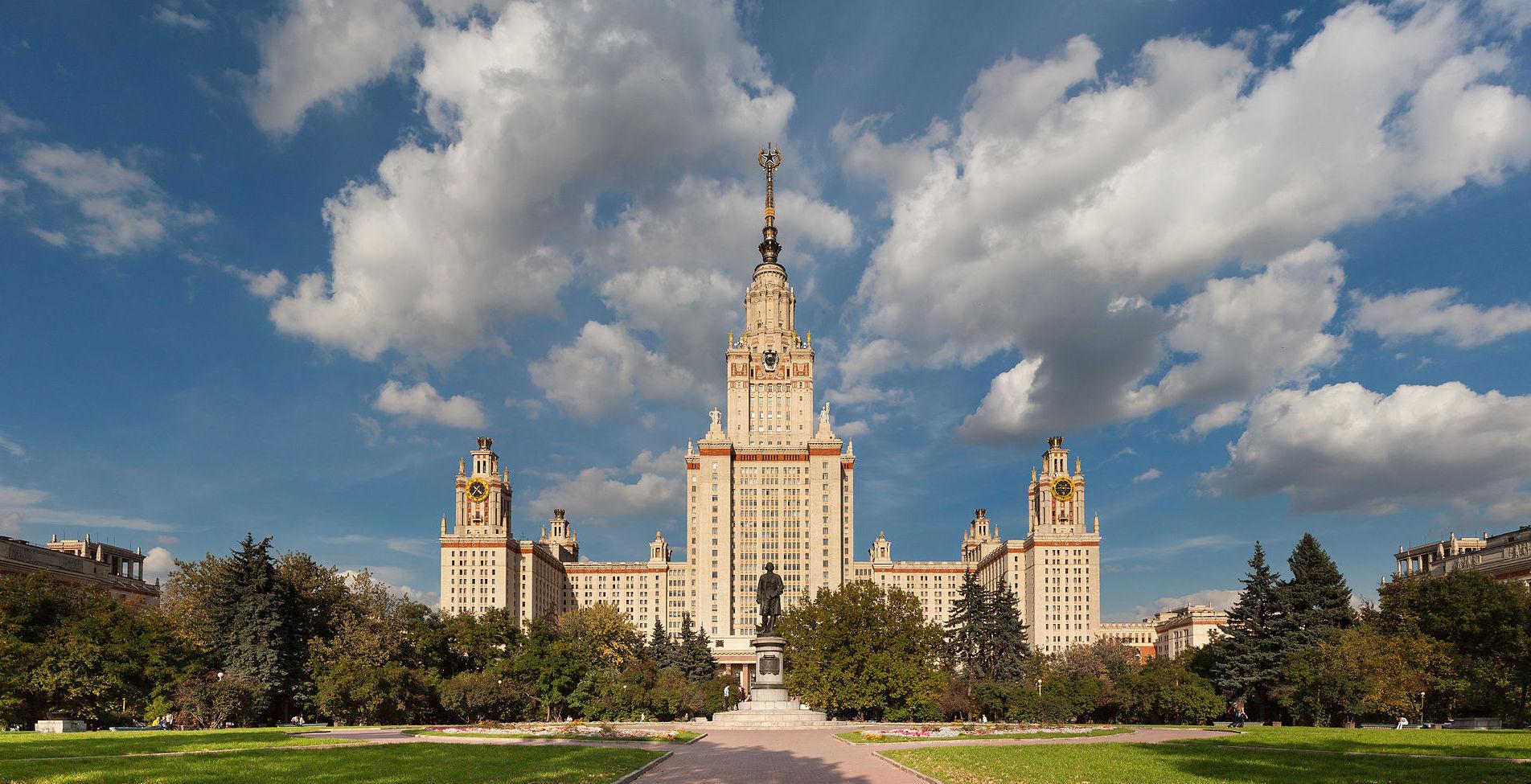
Notre Dame Cathedral (Paris, France)
Notre Dame de Paris is one of the most iconic examples of Gothic architecture, dedicated to the Virgin Mary. Originally conceived by the Bishop of Paris, Maurice de Sully, construction of the building in the centre of the French capital began in 1163 during the reign of King Louis VII and was completed almost 200 years later. The structure of the cathedral consists of a choir and an apse (a semicircular projection of the building adjacent to the main room), a long nave and a short transept (a long room surrounded by a series of columns) joined together in the shape of a cross. The modern spire was added during the restoration in the 19th century. The interior has huge dimensions for a cathedral - 130x48 m, the height of the roof is 35 m, one of the facades is highlighted by towers with early Gothic carvings. Visitors can admire skilful stained glass windows, a collection of statues, paintings and tapestries. The cathedral also houses many religious and historical artefacts, among which the crown of thorns, believed to have been worn by Jesus Christ during his crucifixion, is particularly important.
Throughout its history, the Cathedral of Notre-Dame has witnessed many historical events and upheavals: after the French Revolution, it was saved from possible destruction by Napoleon, who crowned himself Emperor of France here. The popularity of Victor Hugo's novel of the same name, in which the cathedral is the setting, prompted the famous French architect of the time, Eugène Viollet-de-Luc, to carry out a thorough restoration of the cathedral. During the next one, in 2019, a massive fire broke out in the attic of the building, destroying most of the roof, the spire and part of the vaults. This event shocked and astonished not only the people of Paris and the French, but also those of other countries. At the same time, the current president of the country, Emmanuel Macron, personally promised that the cathedral would be restored and reopened in December of this year. The history of this architectural symbol is inextricably linked to France, where it has been a place of Christian worship for centuries. Every year, millions of tourists from all over the world visit this architectural masterpiece. No wonder it is a UNESCO World Heritage Site.
Notre Dame Cathedral on the map
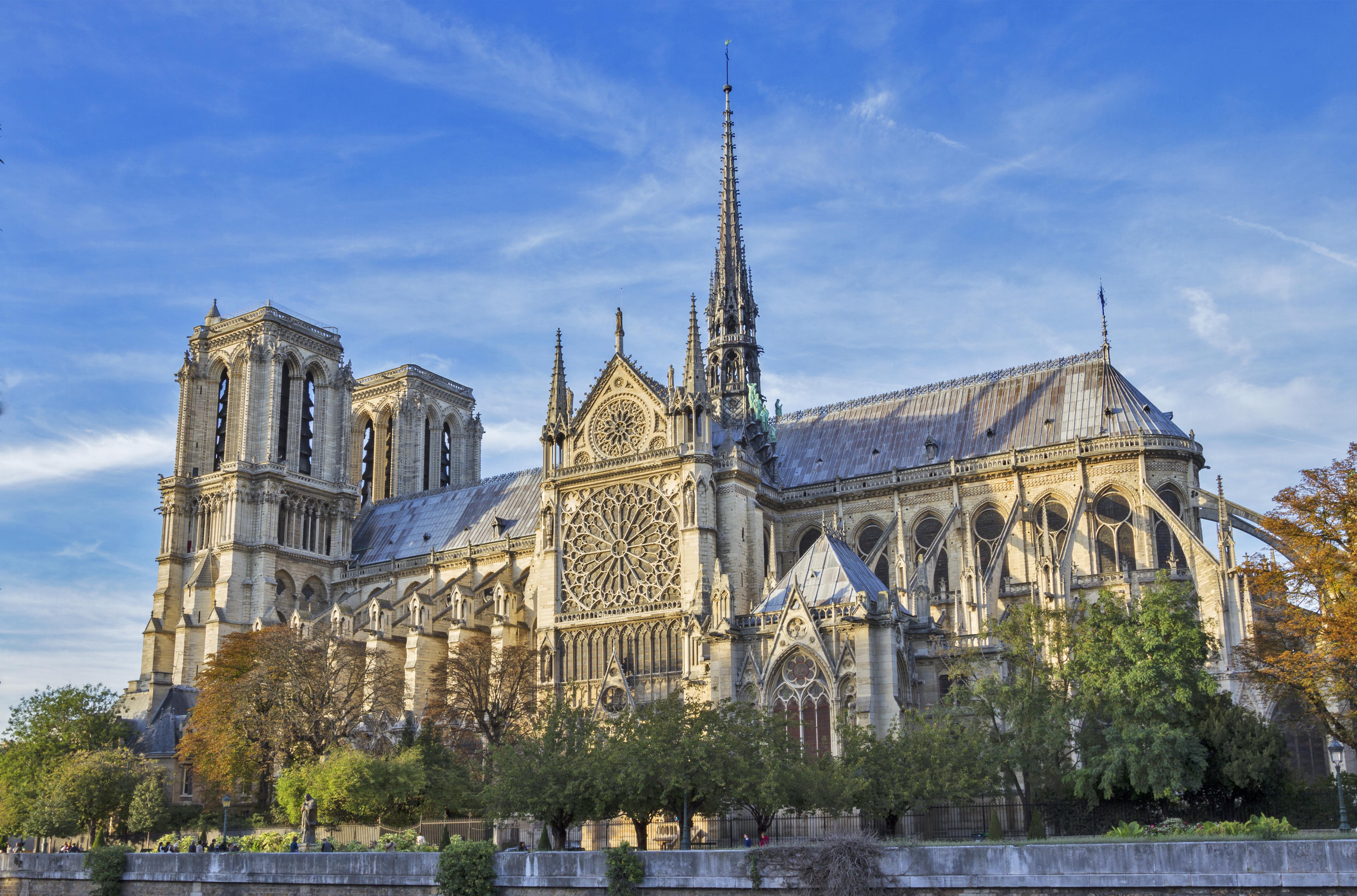
Petronas Towers (Kuala Lumpur, Malaysia)
Opened in 1999, the Petronas Towers have become a symbol not only of Malaysia but of Southeast Asia. At the start of this millennium, they were the tallest in the world and the most recognisable landmark in Kuala Lumpur. Designed by American-Argentine architect Cesar Pelli, each of the 88-storey buildings is 452 metres high. The total area of each office tower is more than 43,000 m2. They are named after the national oil company, Petronas, which has its headquarters in one of the towers. Construction of the skyscrapers began after a long cycle of rigorous testing and modelling of wind and seismic loads. Wind tunnels and special presses were used. In cross-section, each of the towers is an eight-pointed star, which in Islamic cultures represents unity, harmony and stability. The construction of the foundations required a 30 metre deep excavation, where the largest concrete pour in the country's history took place. On the 41st and 42nd floors, the towers are connected by a 'sky bridge' to ensure the rigidity and stability of the structure, and on the 86th floor there is a viewing platform.
The exterior is made of glass and stainless steel, while the interior is designed to resemble the national patterns and colours of Malaysia. On the lower floors and below the buildings is a concert hall, the Petronas Philharmonic Hall, which is home to the local symphony orchestra. There are also luxury designer shops and restaurants. The buildings are surrounded by green spaces that promote relaxation and tranquillity. The extraordinary design and architecture of the towers underlines Malaysia's commitment to progress and innovation. According to Kuala Lumpur residents, it is this architectural marvel that has 'moved' Malaysia into the XXI century. The twin skyscrapers have been the heroes of films, the most famous being Trapped, starring Sir Sean Connery and Catherine-Zeta Jones, filmed in the year the Petronas Towers were officially opened.
Petronas Twin Towers on the map
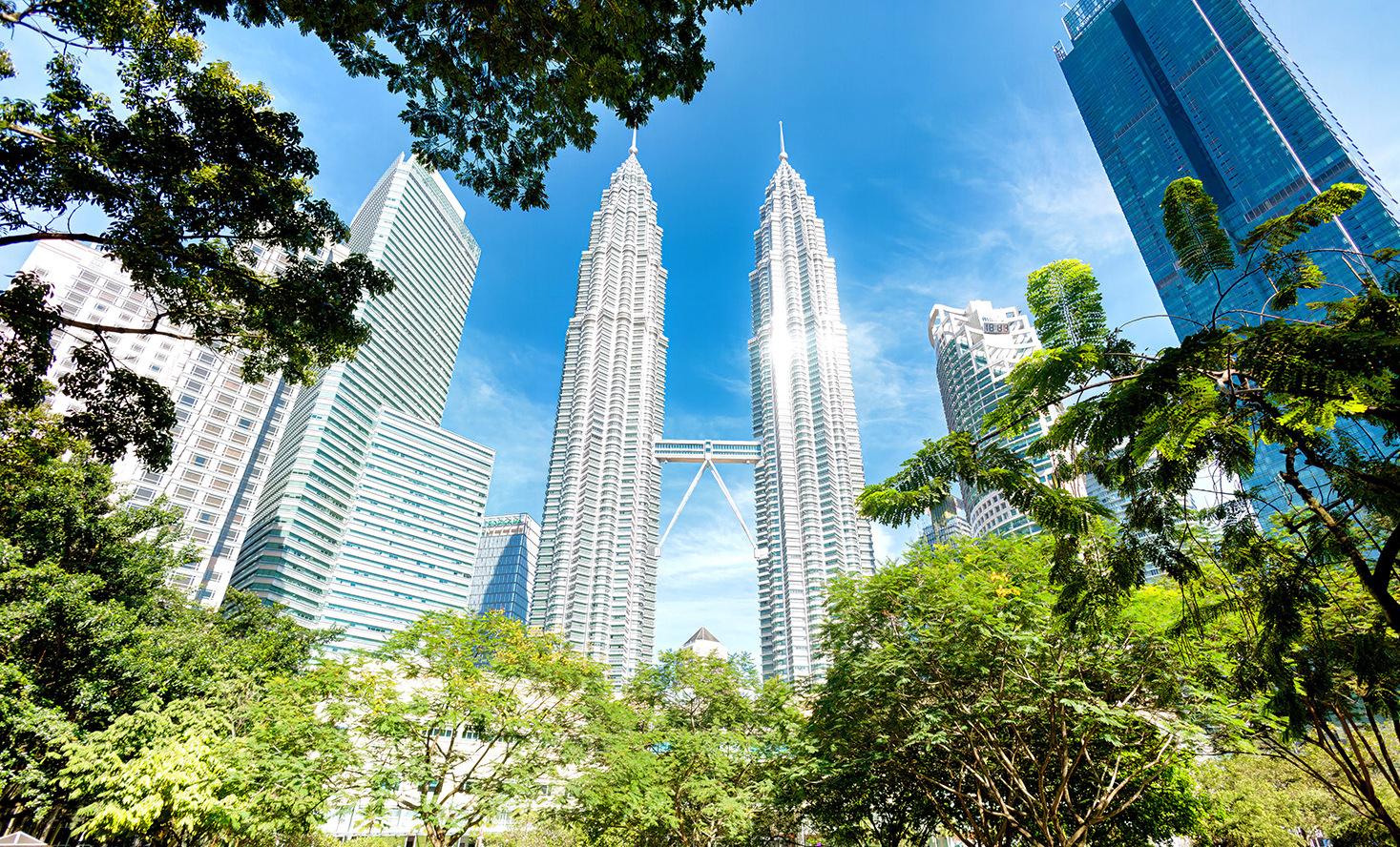
Taj Mahal (Agra, India)
The Taj Mahal is the 'jewel' of India and is a unique monument, astonishing in its architecture and energy. It is visited by millions of tourists every year, attracted by its beauty and tragic history. Padishah Jahan of the Mughal Empire had it built in 1631 as a mausoleum for his favourite wife, who died in childbirth on her 14th birthday. The Taj Mahal has been a symbol of love ever since. The Mughal Empire existed from 1526 to the middle of the 18th century in what is now India, Pakistan, Bangladesh and southern Afghanistan. The mausoleum was built over 20 years by thousands of workers on the banks of the Jamna River. But grief and love for his deceased wife were not the only motives behind the construction of the mosque: every stone and mysterious inscription on the walls tells of Jahan's desire for power and the extension of his rule. The building is made of red sandstone, and a rare and expensive white marble was chosen for its decoration. This stone has a wonderful property: it appears pink in the morning, white during the day and silver at night.
The building is 73 metres high and has the shape of a square, cut off at the corners. The main dome, 18 metres in diameter, is a unique structure, especially at the time, and its construction still raises many questions today. It is surrounded by four domes of smaller diameter. Inside are the tombs of the Padishah and his wife, decorated with precious stones. Outside, the building is surrounded by 4 minarets 40 metres high and a beautiful garden with fountains. There is no doubt that the temple, originally a source of admiration, is surrounded by numerous legends and myths. The most enduring of these is that Jahan, rejected and imprisoned by his overbearing son, planned to build another black marble mausoleum on the other bank of the Jamna, but for himself. Today the Taj Mahal is India's most famous monument. In 2007 it was voted one of the seven new wonders of the world. Every night at the Alakriti Theatre in Agra, there is a performance called Mohabbat the Taj, dedicated to the great love and respect for the mausoleum. It was inscribed on the UNESCO World Heritage List in 1983.

Chrysler Building (New York, USA)
The Chrysler Building is one of the most beautiful and recognisable skyscrapers in the United States. Located on the eastern side of Manhattan Island, the building was built in 1930 by automobile giant Chrysler for its New York City headquarters. Designed by architect Van Ellen, it came at a time when the largest city in the US was competing to build the tallest building in the world. This prompted American car manufacturer and industrialist Walter Chrysler to build no ordinary building for his company. During the 'race to the top', construction progressed at an incredible rate - 4 floors per week. As a result, the total height of the 77-storey Art Deco building was 320 metres and its premises covered an area of 111,000 m2. The main feature of the building is its upper floors, which have an unusual metal roof that flows into a spire. The Chrysler Building is built of light and dark bricks, which is no coincidence: the architect wanted the windows of the building to be clearly distinguished from the façade and not get lost. Therefore, the window openings were built with bricks of a darker shade.
On the 31st floor, the building is adorned with stylised metal wings in the shape of the Chrysler car logo of the time, and on the 61st floor - with giant stainless steel eagle heads pointing in all directions. The interior was breathtaking in its splendour: marble, granite and steel were used in the lobby, and the lifts were exquisitely finished in exotic woods. At night, the spire was illuminated by lights hidden in stainless steel, and a viewing platform was installed on the highest floors. The Chrysler immediately became one of the city's landmarks and held the title of world's tallest building for 11 months before being replaced by another New York skyscraper. In 1976 the building was declared a National Historical Monument of the USA. It is traditionally one of the top ten most popular architectural structures in America. Chrysler occupied part of the building until 1950, when it was sold to another owner. The recognisable architectural image of the Chrysler Building skyscraper is featured in numerous films, television programmes and works by photographers around the world as an integral part of the colourful panoramas of New York.
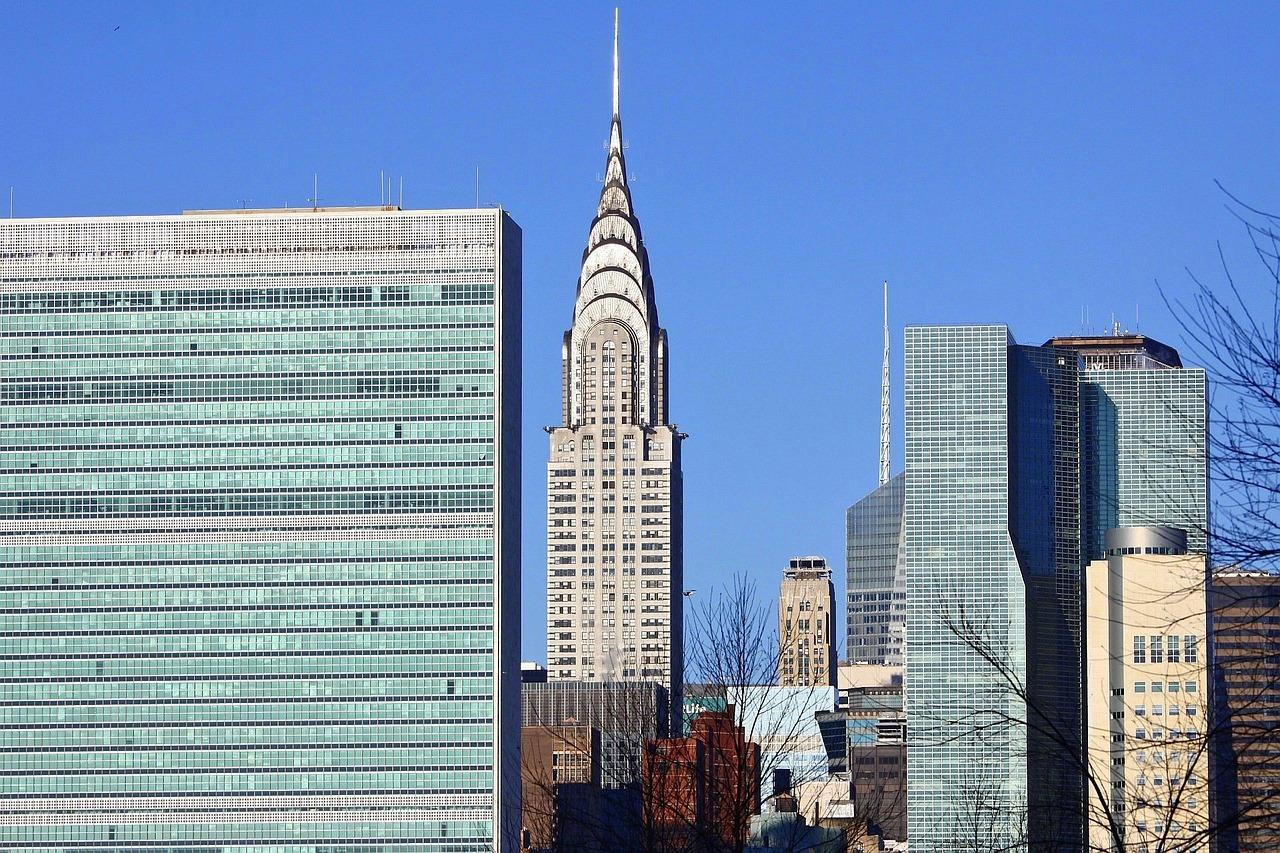
Ayia Napa Marina (Famagusta, Cyprus)
One of the symbols of modern architecture in Cyprus is the Ayia Napa Marina complex, designed by the American engineering firm Smith Group JR. It represents a new conceptual approach to the development of the island's south-eastern coast and serves as a maritime gateway for yachtsmen travelling to the Cypriot coast in the region. According to Stavros Karamondanis, General Manager of the resort, "Cyprus is a safe haven blessed with beautiful nature, year-round sunshine, modern infrastructure, a high standard of living and a true culture of warmth and hospitality. The Ayia Napa Marina Resort and Residential Complex is a model of high quality accommodation and service for guests and property owners. It comprises two high-rise towers, the East Tower and the West Tower, with 25 and 26 floors respectively (190 apartments in total), 29 luxury villas located both on the coast and overlooking the marina, and coastal infrastructure for comfortable living and recreation.
The marina can accommodate up to 600 yachts of up to 60 metres in length at any one time, and a multi-storey shipyard has been built for their winter storage. A promenade with a promenade zone, a number of shops, bars and restaurants, a cultural centre and green areas ensure a good quality of life and recreation. The seawater in this part of the Mediterranean has a unique turquoise colour.
Also at the service of residents and guests:
- Private leisure areas on the floors of the high-rise buildings;
- Gyms, swimming pools, spa and wellness centres;
- 24-hour concierge and security services;
- Children's centre and personal yacht mooring.
Ayia Napa Marina is the first development of its kind in this part of Cyprus. In addition, the investors plan to make Ayia Napa Marina the most important yachting centre in the Mediterranean.
Properties available for sale in Ayia Napa Marina
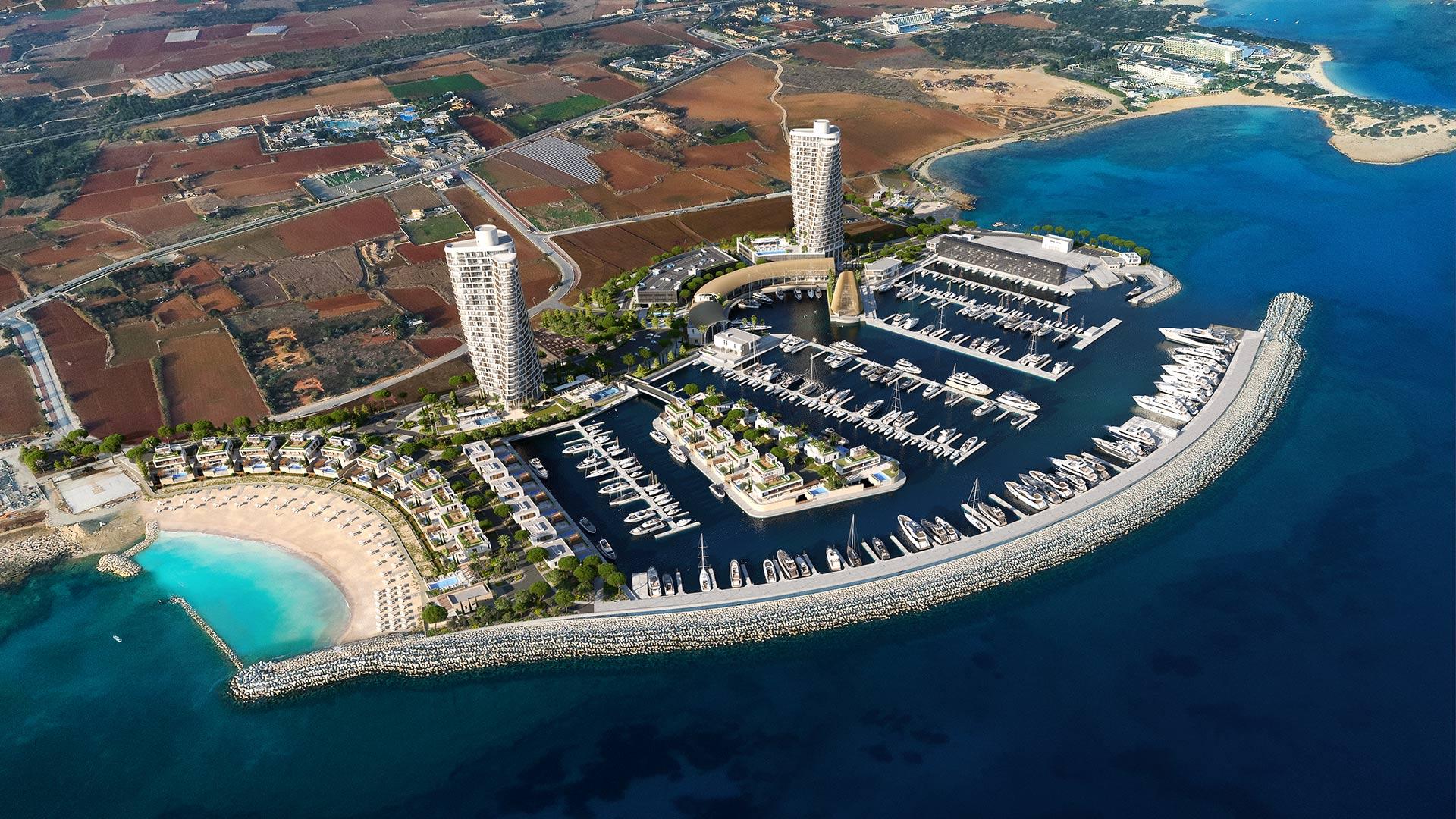
Read also:

